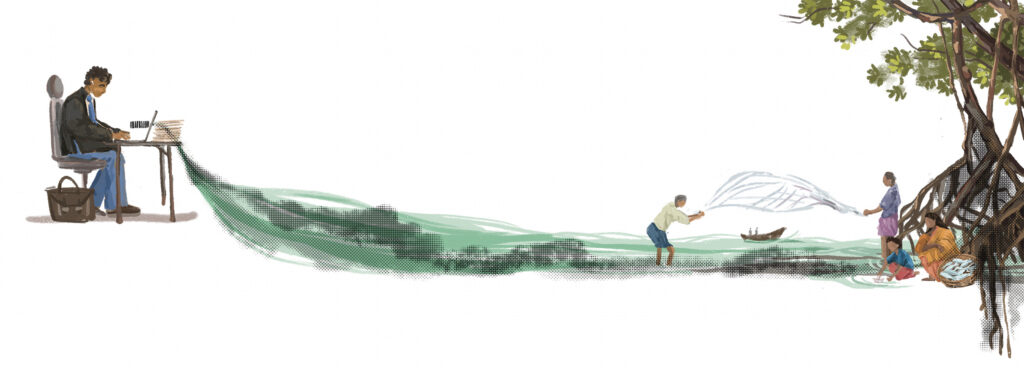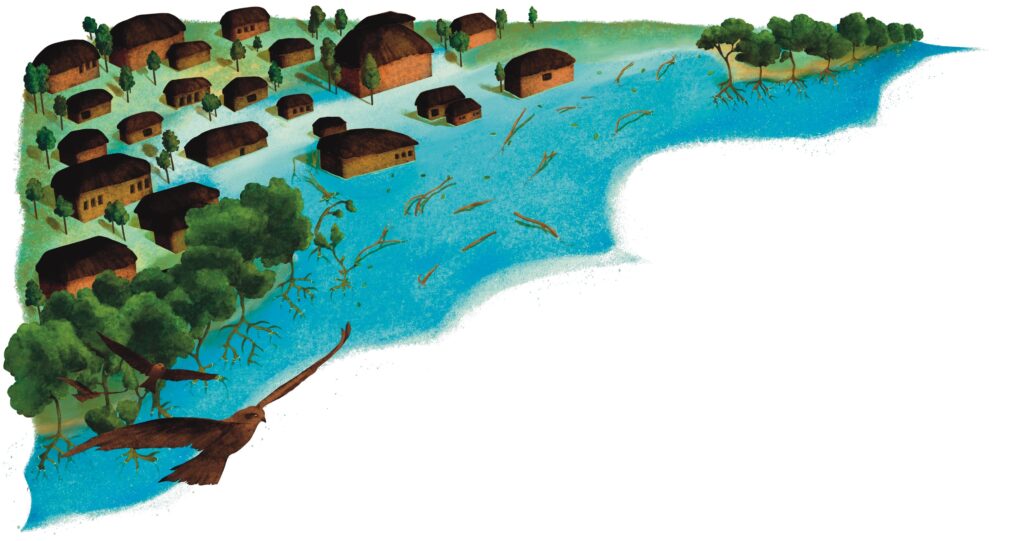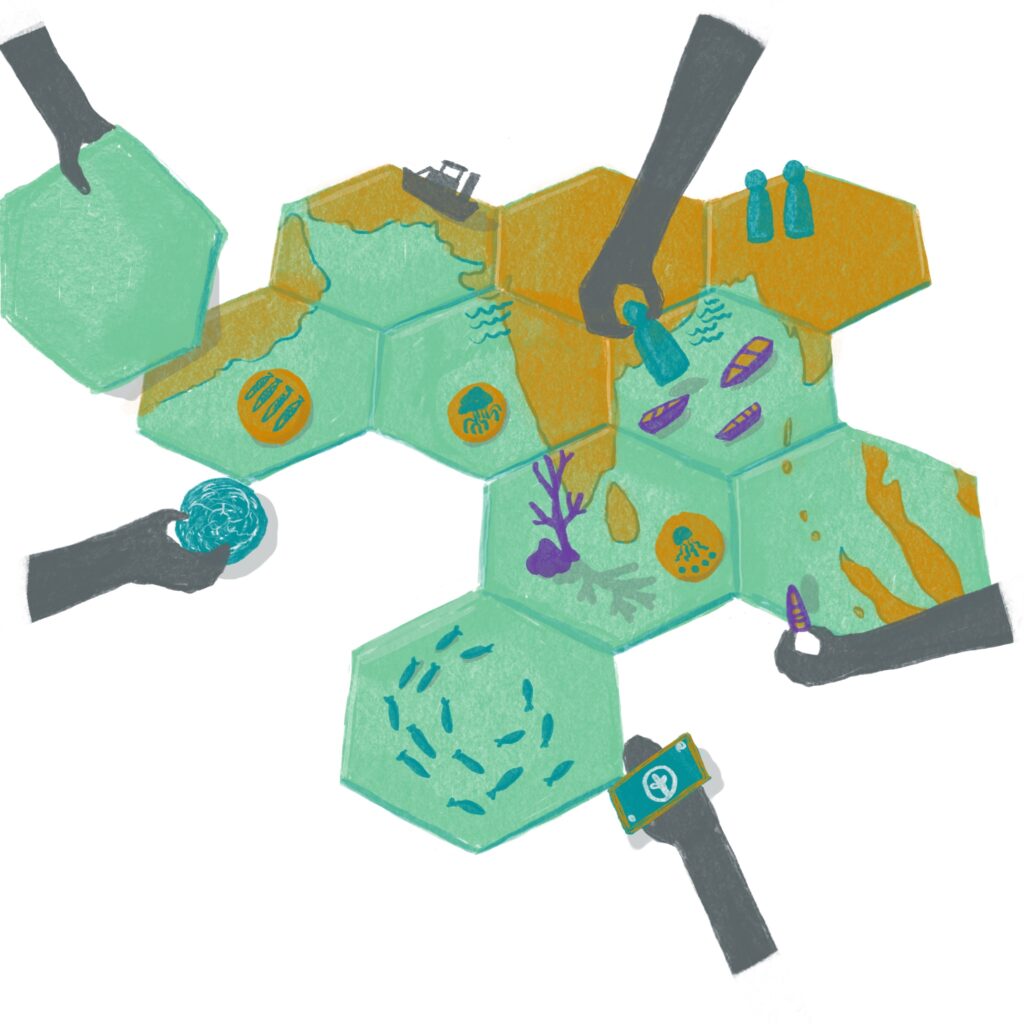“The biggest challenge for all frontline forest staff is our 24 hours duty. No other public department has this kind of working hours, the police and even the army have shifts. We have no shifts! Our work never ends!”
The quote above was a lament by a frontline forest worker from the Corbett Tiger Reserve in north India to one of the authors during their PhD fieldwork. Such perceptions about the realities of ranger work remain invisible in popular narratives about rangers working in biodiversity conservation.
Recent conservation social science work on rangers highlights the importance of rangers as the primary actors in doing the work of conservation in protected areas. Such work thus positions rangers as both the most important as well as the most vulnerable actors in addressing wildlife crime, including but not limited to illegal hunting and poaching, illicit logging and collection of non-timber forest products. Rangers more broadly are on the ground, engaged in protecting and conserving wildlife, forests, and achieving intertwined social and ecological objectives of conservation and human development. Yet, despite the multifaceted nature of ranger work and the political economic and socio-cultural contexts they operate in, rangers and their work are often portrayed in simplistic terms.
Mainstream discourse in conservation natural sciences and policy, for example, often tends to portray rangers as heroes fighting against villainous poachers. On the other hand, some critical approaches in conservation social science, like political ecology, can be quick to point to rangers as wielders of unjust violence in pursuit of conservation objectives. While we recognise that rangers do often use violence and are also important actors in conserving biodiversity and saving particular species, any binary or simplistic portrayal of rangers and their work risks glossing over more complex realities that are important to understanding the challenges and opportunities in supporting rangers, and the broader social and ecological objectives of biodiversity conservation that their work underpins.
The social and political dimensions of conservation labour
A recent survey conducted by the World Wide Fund for Nature (WWF) and the Ranger Federation of Asia revealed that ‘rangers’ in Asia work in dangerous conditions with low pay, poor facilities, and spend long durations away from their families. The survey collectively refers to all frontline conservation staff as “rangers”, which includes forest guards, foresters, wildlife wardens, scouts, and watchers. However, in frontline conservation work particularly in the Global South, rangers often work under rigid social hierarchies, often shaped by caste, class, gender, and race.

For example, during our fieldwork across several national parks in India, we found that indigenous and lower caste persons were usually employed as daily wage workers with little job security. They have also been conceptualised as “vulnerable chowkidars” (see Further Reading section) as well as forest watchers working in precarious working conditions without fixed term contracts. In our research with rangers in India, we find systemic caste discrimination and exploitation in frontline forest work, where upper caste forest guards coerce lower caste daily wage forest watchers to do chores associated with their caste occupation, such as clean toilets and wash clothes.
Additionally, dominant popular conservation discourses surrounding illegal wildlife trade and poaching often draw on unhelpful, simplified, and often racialized binaries of helpless dead animals killed by “bad” people (read poachers) who are then caught and some times killed by conservation heroes (read rangers or other law enforcement or security personnel). The realities of poaching and the work of rangers to address this are often much more complex and contextually situated.
As highlighted by geographers studying labour, the social and political conditions in which work is done is fundamental to the processes that define power relations between workers (rangers, in this case) and those whom they work for. The same conditions also shape and limit the ways in which workers are able to struggle to improve the terms and conditions of their employment.
We thus need to pay close attention to power relations, social hierarchies, working conditions, and related political and social conflicts (e.g. strikes, wages, working contracts and salaries, levels of informality and insecurity). However, scientists, practitioners and policymakers invested in designing and implementing biodiversity conservation policies have still to embrace these insights, leading to a limited understanding of how people are put to work for conservation, under what conditions they work, and how conservation affects labour dynamics and related conflicts, and vice versa. Consequently, the lack of attention to labour in conservation research, practice and policy can contribute to inadequate and poorly designed conservation policies, initiatives and projects.
For example, conservation interventions in India concerning frontline labour have been limited to providing equipment, such as jackets, shoes, water filters and solar cookers, without focusing on systemic factors of labour exploitation and oppression, such as low wages and lack of social security. Most daily wage labour in protected areas across India is done in contravention to the Factories Act, 1948, which states: “No employee is supposed to work for more than 48 hours in a week and 9 hours in a day. Any employee who works for more than this period is eligible for overtime remuneration prescribed as twice the amount of ordinary wages.”
This example alone highlights a set of questions that are usually neglected in conservation research, advocacy, and policymaking: To what extent are conservation workers systematically exploited and/or overworked? And what are the consequences for them and the conservation work they do? Do labour relations in conservation exist outside of formal labour regulations, and if so, how and why? How do conservation initiatives benefit economically from, and at the same time depend on the exploitation and informalisation of workers? What are the spaces for mobilisation, organisation, and protest that exist for conservation workers and how are these spaces constrained and undermined?
The militarisation of conservation
Our own preliminary research in South Asia and Eastern and Southern Africa indicates that the current militarised approach to conservation is reshaping the priorities of rangers’ work, how they are trained, and ultimately what their roles and responsibilities as frontline conservation workers are.
Militarisation of conservation, for instance, inevitably leads to the militarisation of conservation labour, affecting how rangers are trained and who does this training, along with shifts in their roles, responsibilities and daily priorities.
For example, in some conservation areas of South Africa and Mozambique, rangers have been increasingly engaging in more dangerous, narrow, paramilitary anti-poaching work with very little to no core ecological and conservation work, such as vegetation and species monitoring, landscape assessments or community engagement. Organisations supporting rangers have documented increased levels of trauma and PTSD-related mental health challenges as a result of this change in their work. This new form of labour is often supported by the use of surveillance technologies, weapons and counterinsurgency training for frontline conservation workers, and through the involvement of ex-military personnel or war veterans as part of the changing conservation labour force.

Recent research on the impacts of surveillance technologies, such as ranger-based law enforcement monitoring software, suggests that such technologies result in both empowerment and disempowerment, deskilling and upskilling, control and autonomy of labourers and the labour process. For instance, younger tech savvy forest guards in the Corbett Tiger Reserve find the introduction of smartphones and digital methods of data collection as upskilling, while older forest guards and forest watchers believe that their traditional or tacit knowledge of natural history is rapidly getting deteriorated when data collection or patrolling are done with a smartphone.
We are in a key moment for the future of biodiversity conservation. The establishment of protected areas for biodiversity conservation is set for major growth in the coming decade with the passage of 30×30 targets. This is positioned as a lynchpin of integrated and global environmental action and finance that aims to protect species, respond to climate change and achieve a ‘green’ post-pandemic economic recovery. Conservation workers will play a frontline role in implementing these highly ambitious, controversial and conflict-laden goals. Understanding who works in conservation, in what capacities, how this is changing with and responding to shifts in conservation policy and practice is vital. A stronger understanding of the changing role and nature of labour in conservation is thus crucial for advancing a theoretically relevant and socially just conservation science, design, practice and implementation. To this end, a transdisciplinary approach is necessary, combining conservation social science with labour studies from but not limited to geography, sociology and economics.

Further Reading
Runacres, A. 2021. Doing chowkidaari: Vulnerability in village-forest relations and the compulsion of forest work. Conservation and society 19(4): 271–281.






